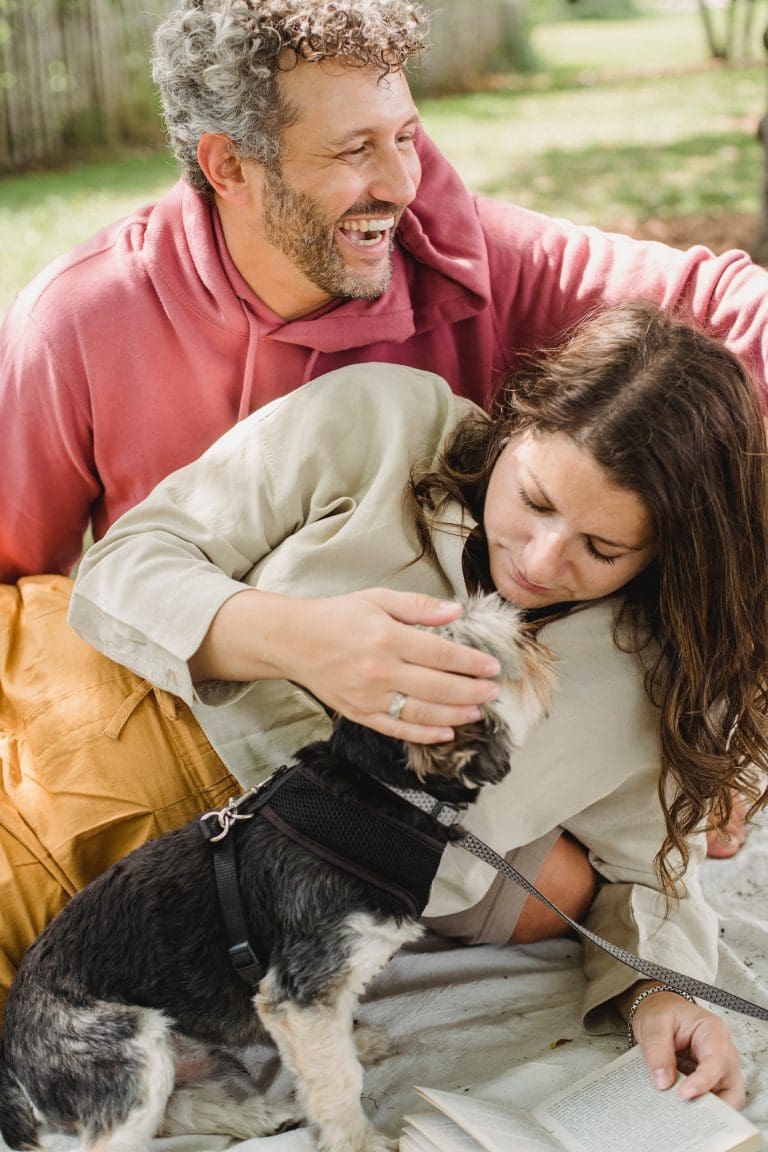Where To Buy A Dog?
Post Date:
December 10, 2024
(Date Last Modified: November 13, 2025)
Deciding where to get a dog is a choice that touches animal welfare, household routines, and long-term responsibility. Careful selection of the source affects the dog’s health, behavior, and your ability to meet its needs.
Decide if a dog fits your life
Assess household dynamics, allergies, and the realistic time and energy you can commit, noting that most adult dogs require about 30–60 minutes of dedicated daily activity to meet exercise and enrichment needs[1].
Where to look: seller types
Common sources include registered breeders, municipal and private shelters or breed-specific rescues, private owner-to-owner rehoming, and online marketplaces or pet stores, each with trade-offs around health guarantees, transparency, cost, and the level of post-adoption support you can expect.
Reputable breeders
Ethical breeders prioritize health testing and transparent recordkeeping, typically permit facility visits and conversations about lineage and temperament, and may maintain waiting lists for planned litters of three to six months for popular combinations of traits and registrations[2].
Shelters and breed-specific rescues
Adopting from shelters and rescues often involves an application, screening, and behavior assessment, and while adoption fees commonly range from $50 to $300 these fees frequently include initial vaccinations and spay or neuter procedures as part of the adoption package[3].
Private rehoming and owner-to-owner transfers
When taking a dog from a previous owner, verify the animal’s history and reasons for rehoming, ask for existing veterinary records, and agree on a trial or foster period commonly lasting about 7–14 days so both parties can confirm suitability before finalizing the transfer[4].
Online marketplaces and classifieds
Online ads can be useful but carry risk, so watch for red flags such as sellers who insist on remote payment or whose prices are substantially below local norms—offers over 50% below typical local rates are a common warning sign for scams and trafficking schemes[5].
Pet stores, brokers, and puppy mills
Commercial sourcing through brokers or pet stores can conceal poor welfare and opaque supply chains, so demand documentation about where animals came from, refuse to buy without transparent health records and the opportunity to see the source facility when possible, and consider reporting suspicious practices to local authorities or animal welfare agencies.
What to check before buying or adopting
Insist on complete vaccination and deworming records and on microchip information, and arrange a veterinary examination because core puppy vaccinations typically begin at about 6–8 weeks of age and are repeated every 3–4 weeks until around 16 weeks according to standard veterinary schedules[6], and because written agreements should clarify return policies, spay/neuter expectations, and any health guarantees.
Costs, timing, and home preparation
Budget for upfront and recurring costs and choose timing that minimizes household disruption, recognizing that first‑year expenses commonly fall in the range of $1,200–$2,000 when vet care, basic supplies, food, and training are included, and prepare your home with safe space, secure fencing or containment, and a training plan plus contact information for a local veterinarian and rescue resources[7].
| Category | Typical first‑year cost | Typical monthly ongoing | Notes |
|---|---|---|---|
| Adoption or purchase fee | $0–$2,000 | — | Varies widely by source and pedigree |
| Initial veterinary care | $150–$800 | $10–$50 | Includes exams, vaccines, parasite prevention |
| Food and supplies | $300–$800 | $30–$80 | Bowl, bed, crate, leash, ongoing food |
| Training and behavior support | $100–$600 | $0–$50 | Group classes or private sessions as needed |
Consider additional logistical, health, and legal details before finalizing where you get a dog so the transition is safe for the animal and compliant with local rules.
Vaccination and public‑health rules: many U.S. jurisdictions and veterinary authorities require or recommend beginning rabies vaccination at about 12–16 weeks of age for primary immunization, and local ordinances commonly make rabies vaccination and licensing mandatory for dogs[8].
Travel and transfer logistics: when moving a dog by air or exporting across borders, carriers and regulators frequently set minimum ages and documentation windows — most commercial airlines and international routes expect puppies to be at least 8–10 weeks old and to be accompanied by a USDA health certificate issued within 10 days of travel[9].
Vaccination schedules and timing for core preventive care should be planned before acquisition; accepted guideline schedules start distemper/parvovirus series at about 6–8 weeks of age and repeat vaccines every 2–4 weeks until around 16 weeks depending on vaccine type and local risk assessment[10].
Microchip and identification practices: implantable microchips using the ISO standard frequency of 134.2 kHz are widely used and are readable by most shelter and veterinary scanners, and owners should register microchips in at least one national database to improve reunification chances[11].
Initial veterinary timing and acclimation: many rescues and clinics advise a general health check within 48–72 hours of bringing a dog into the home to screen for contagious conditions and to confirm vaccination and parasite‑prevention plans, and an acclimation period of about 1–2 weeks helps reduce stress while the dog learns household routines[11].
Food safety, recalls, and regulatory reporting: manufacturers and regulators post pet food recalls and safety notices through centralized databases, and consumers are advised to check recalls against product lot numbers immediately because affected products can be distributed across multiple states and retail channels[12].
Legal and animal welfare reporting: if you suspect a seller or facility is operating outside legal or welfare standards, file a report with local animal control and, for interstate or commercial concerns, with federal agencies that oversee animal transport and commerce, since these authorities handle complaints and investigations that can span multiple jurisdictions[9].
Practical checklist before final transfer: schedule an initial veterinary exam within the first few days, obtain written transfer agreements or adoption contracts, confirm microchip registration and local licensing, verify recent vaccination dates and parasite control, and plan for a minimum 1–2 week adjustment period with consistent routines and gradual introductions to household members and other pets[10].
Puppy socialization and early learning are time‑sensitive: the primary socialization window is roughly 3–12 weeks of age, during which guided exposure to people, animals, and environments reduces long‑term fear and reactivity risks[10].
Many veterinarians advise timing elective surgeries carefully; spay or neuter is commonly recommended at around 6 months of age for routine cases, although individual factors such as breed, size, and medical history can change the recommended timing and should be discussed with your veterinarian[1].
Genetic screening can identify known breed‑specific variants before breeding or procurement; some registries and health programs require results for hip and elbow evaluations or specific inherited disease clearances when registering or certifying adults, and you should request documentation for any tests claimed by a seller or breeder[2].
Foster‑to‑adopt and trial periods are practical risk‑reduction strategies: many rescues and shelters offer trial fosters commonly lasting between 7 and 30 days to assess compatibility and provide time for the dog to settle and for behavioral follow‑up if needed[3].
If you consider pet insurance, compare coverage limits and reimbursement models carefully: policies differ by deductible and reimbursement rate, and older animals or pre‑existing conditions are often excluded so obtaining estimates before commitment helps gauge likely out‑of‑pocket exposure when major care is needed[7].
Transport and interstate movement rules affect timing and documentation: commercial carriers and export rules commonly require puppies to be at least 8–10 weeks old for travel and usually require a USDA or state health certificate issued within 10 days of departure for interstate or international movement[9].
When evaluating a potential dog, prioritize veterinary documentation and recent exam findings: ask to see records showing core vaccines, deworming dates, and any recent fecal or parasite screenings, and arrange for an independent exam within 48–72 hours of transfer to detect conditions that may need immediate attention[11].
Consumer protections and reporting routes matter: if an advertisement or seller appears fraudulent—such as refusing in‑person meetings, insisting on wire transfers, or providing inconsistent records—report the matter to consumer protection authorities and the FTC because many trafficking and scam patterns are tracked and investigated at the federal level[5].
For imported or commercially bred animals, welfare oversight can be limited; the U.S. Animal Welfare Act and related USDA rules cover certain dealers and transporters, and complaints about large‑scale commercial operations or interstate transport should be directed to the USDA’s animal welfare contacts for investigation[9].
Behavioral evaluation and training support reduce long‑term rehoming risk: if a shelter or breeder provides baseline temperament testing, ask how results were obtained and whether follow‑up training or behavior consultations are offered, and budget for at least several weeks of consistent positive‑reinforcement training to shape desirable household behaviors[3].
Microchipping and licensing lower lost‑pet outcomes: have any offered or required microchip implantation verified and registered, and check your municipality’s licensing rules because many jurisdictions require licensing within a specific window after acquisition to legally keep a dog and to enable faster recovery if the animal is lost[8].
Read and understand any contract, guarantee, or return policy in writing: reputable breeders and rescues typically provide a written contract or adoption agreement that specifies health guarantees, return obligations, and spay/neuter timelines, and you should keep a copy of all records provided at transfer for future veterinary care and legal protections[2].
Plan for emergencies and recall monitoring: save lot numbers and purchase details for food or medication and sign up for recall alerts from regulatory agencies because prompt action is needed when products are recalled and swift removal of an affected product from the home reduces health risk[12].
When doubt remains about a seller’s claims, seek independent verification: request recent veterinary records and, when relevant, contact the listed clinic to verify that the records are authentic, and if a breeder claims registration or titles, verify those claims with the issuing registry to ensure transparency and avoid misrepresentation[6].






